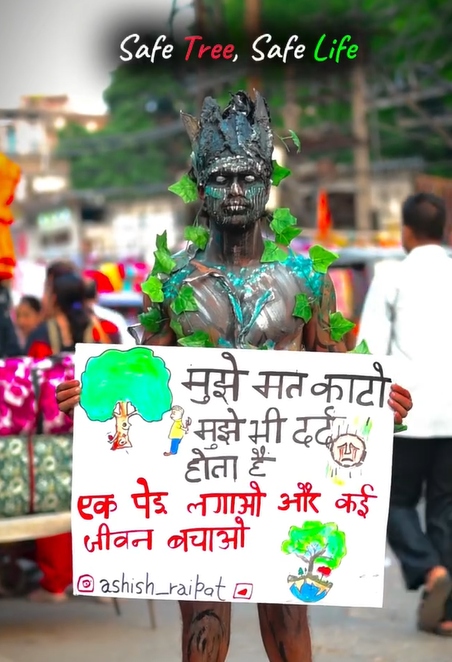A poignant plea from animals and nature has been circulating, urging humans to halt the destruction of forests and natural habitats. As cities and buildings expand, countless species are losing their homes, leaving them displaced and vulnerable.
This heartfelt message, shared by environmental advocate Ashish Raipat, highlights the urgent need for empathy and action to protect wildlife and ecosystems. Officials and conservationists have echoed this sentiment, emphasizing the critical role of forests in maintaining biodiversity and ecological balance.
Ashish Raipat, known for his environmental activism, has been instrumental in raising awareness about ecological issues through social media platforms.

“Our Home Is Not Your Land”: A Plea for Coexistence
Forests are not just vast expanses of land but vibrant ecosystems that serve as homes to countless species. The ongoing deforestation for agriculture, housing, and industrial projects has left many animals without shelter or sustenance.
According to conservation experts, India has lost nearly 50% of its forest cover since 1970, significantly impacting biodiversity. “Every tree cut is a family displaced,” said an environmental official, highlighting the silent suffering of wildlife.
This message calls for a collective effort to rethink development models that prioritize coexistence over exploitation. Ashish Raipat’s advocacy has brought attention to the plight of wildlife, emphasizing that animals, too, have lives and families that suffer deeply when their environments are destroyed.
The Roots of Habitat Destruction
India’s rapid urbanisation and industrialisation have been major contributors to habitat loss. Historical policies during the colonial era prioritised revenue generation over conservation, leading to large-scale deforestation.
While post-independence laws like the Wildlife Protection Act of 1972 have made strides in preserving species such as tigers and elephants, challenges persist. Climate change, forest fires, and illegal activities like poaching further exacerbate the crisis, pushing many species closer to extinction.

Ashish Raipat’s Environmental Advocacy
Ashish Raipat, through his social media campaigns, has been vocal about these issues, using platforms like Instagram to share powerful messages and images that highlight the urgent need for environmental conservation.
His efforts have inspired many to join the cause, advocating for stronger policies and community involvement in protecting natural habitats. Raipat’s background in environmental activism has equipped him with a deep understanding of the interconnectedness of human and wildlife well-being, making his advocacy both impactful and relatable.
Unfortunately, specific details about Ashish Raipat’s personal background or the founding of any environmental organizations he might be associated with are not readily available. However, his commitment to raising awareness about ecological issues has been widely recognized.
The Logical Indian’s Perspective
At The Logical Indian, we believe that development must align with principles of harmony and sustainability. The plight of displaced wildlife is a stark reminder of our shared responsibility toward nature. Progress cannot be deemed meaningful if it comes at the cost of biodiversity and ecological stability.
We urge our readers to reflect on this: Can we truly call it progress if it leaves others homeless? Share your thoughts below and join us in advocating for a future where humans and nature thrive together. As Ashish Raipat’s message resonates with many, we ask: How can we balance human needs with the preservation of natural habitats, ensuring a harmonious coexistence for all?












